It’s official!
Hortus is closed for the season.
It was another great year with lots of new programming, and for all of you who participated in a class, tour, or an event with either Scott, myself, or an outside instructor, we thank you for supporting the arboretum.
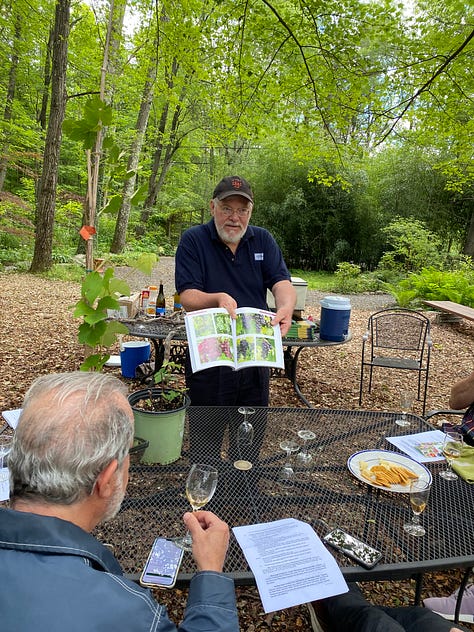
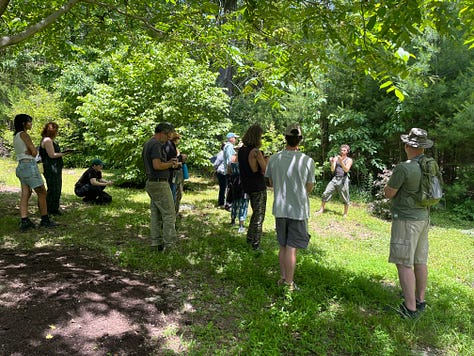
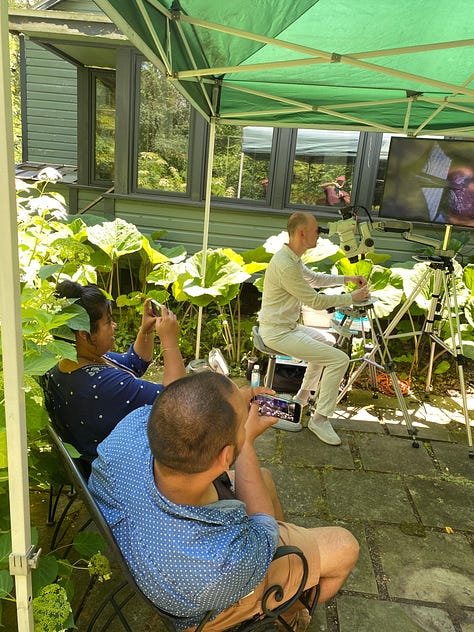
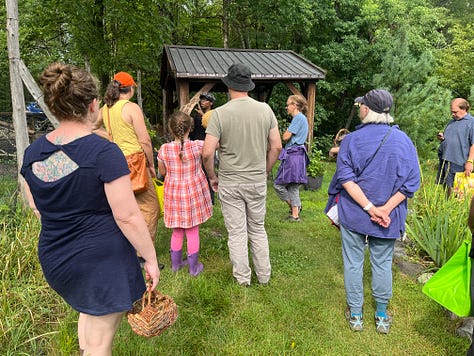
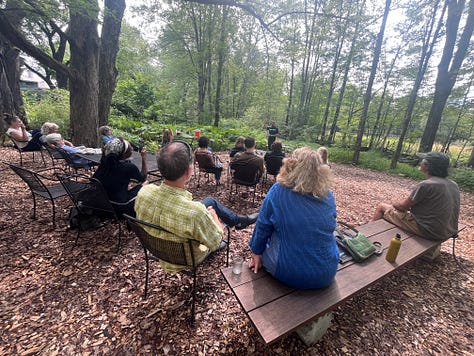
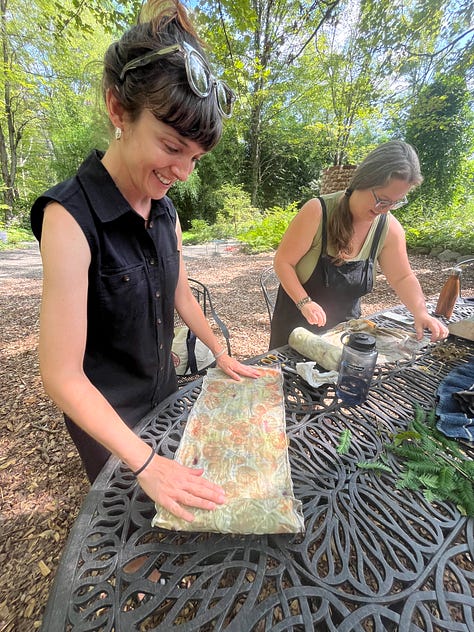
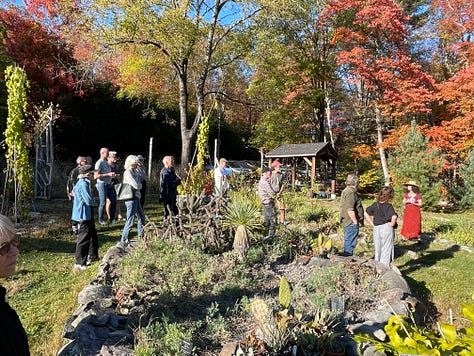
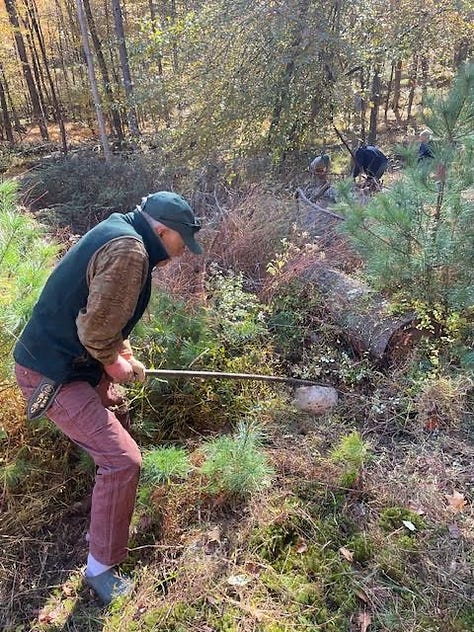
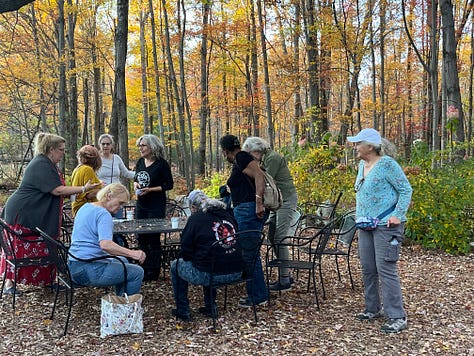
And of course a big thank you to everyone who came by to just visit the gardens to smell the flowers…
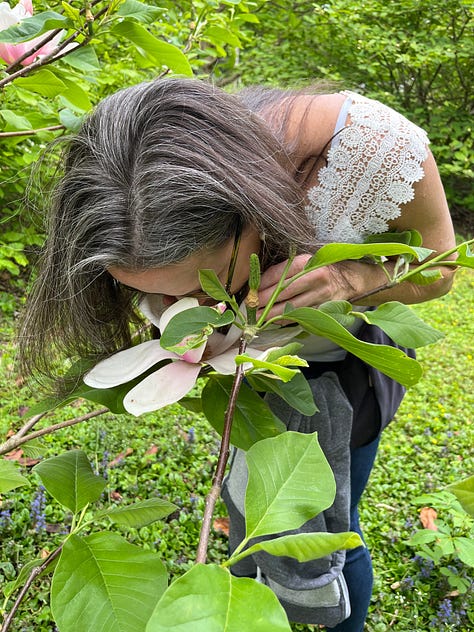
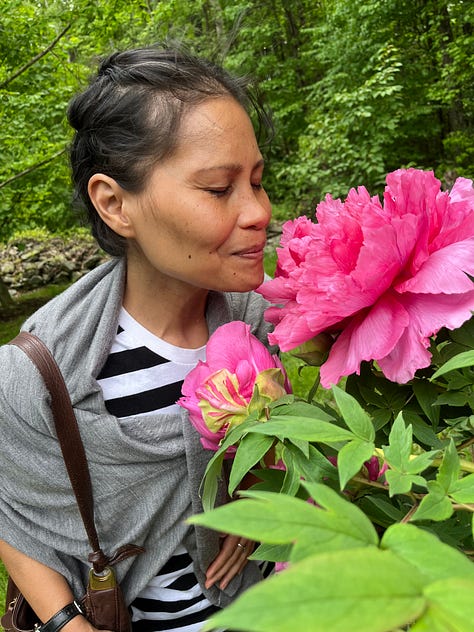
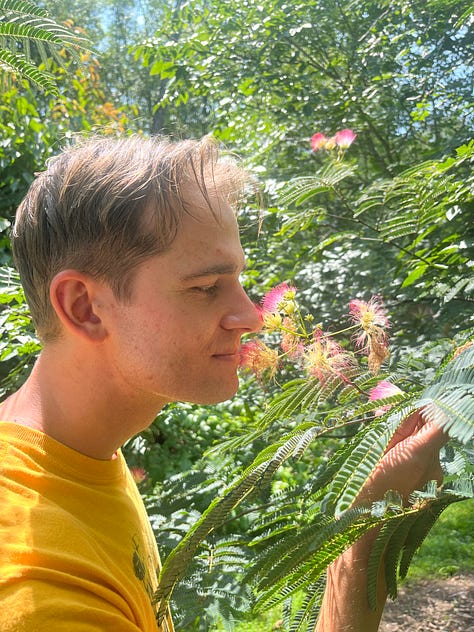
Even though the gardens are closed for the season, we will be giving talks this December & January, so if you’re in the neighborhood, come check us out in person!
Ecological Farmers Association of Ontario (EFAO) - December 4th & 5th 2024
Virginia Association for Biological Farming - January 10th & 12th 2025
In this video, I am using our battery power leaf blower to get the leaves off the gravel paths and into our large leaf pile that we will allow to compost into black gold, which should be ready in about 2-3 years.
We’ve all heard this by now, right? The mantra “Leave the Leaves”..
It’s a good one for sure for all of us gardeners who feel done. - Now that the majority of deciduous trees leaves that were meant to be shed have come down, and only the marcescent Oak species and some Elm leaves are still clinging onto branches as shadows of the season that was. Done in by the coolness of the dropping temperatures and the waning of the floral display. It was hard not to be outside in the very recent November temperature of 60-70 degrees more akin to May or September. In the arboretum all but the Medlars (Mespilus germanica) and the American Persimmon (Diospyros virginiana) fruits have been harvested, and perhaps if the birds don’t feel desperate enough there may still be some Chokeberry (Aronia spp.) left on the shrub’s branches.
Thank you, Daylight Savings Time, for the darkening days. Thank you to the recent snowfall. There’s now some time to bask in the heat of the kitchen, canning, preserving, freezing, and dehydrating which are all in full swing. In my case though that is slightly superseded by the need to bring in somewhat marginally tender or very tender plants to find a place indoors near or not near a sunny window. Ultimately, these plants foliage will turn from the robust, healthy vigor of outside green to an indoor paler and less turgid version of their summer selves. One of my secrets to watering my indoor plants is to use water that I collected from my rain barrel and store them in plastic jugs (1/2 gallon milk ones in my case). I feel like some of my newly arrived outside plants need those minerals that the rain provides.
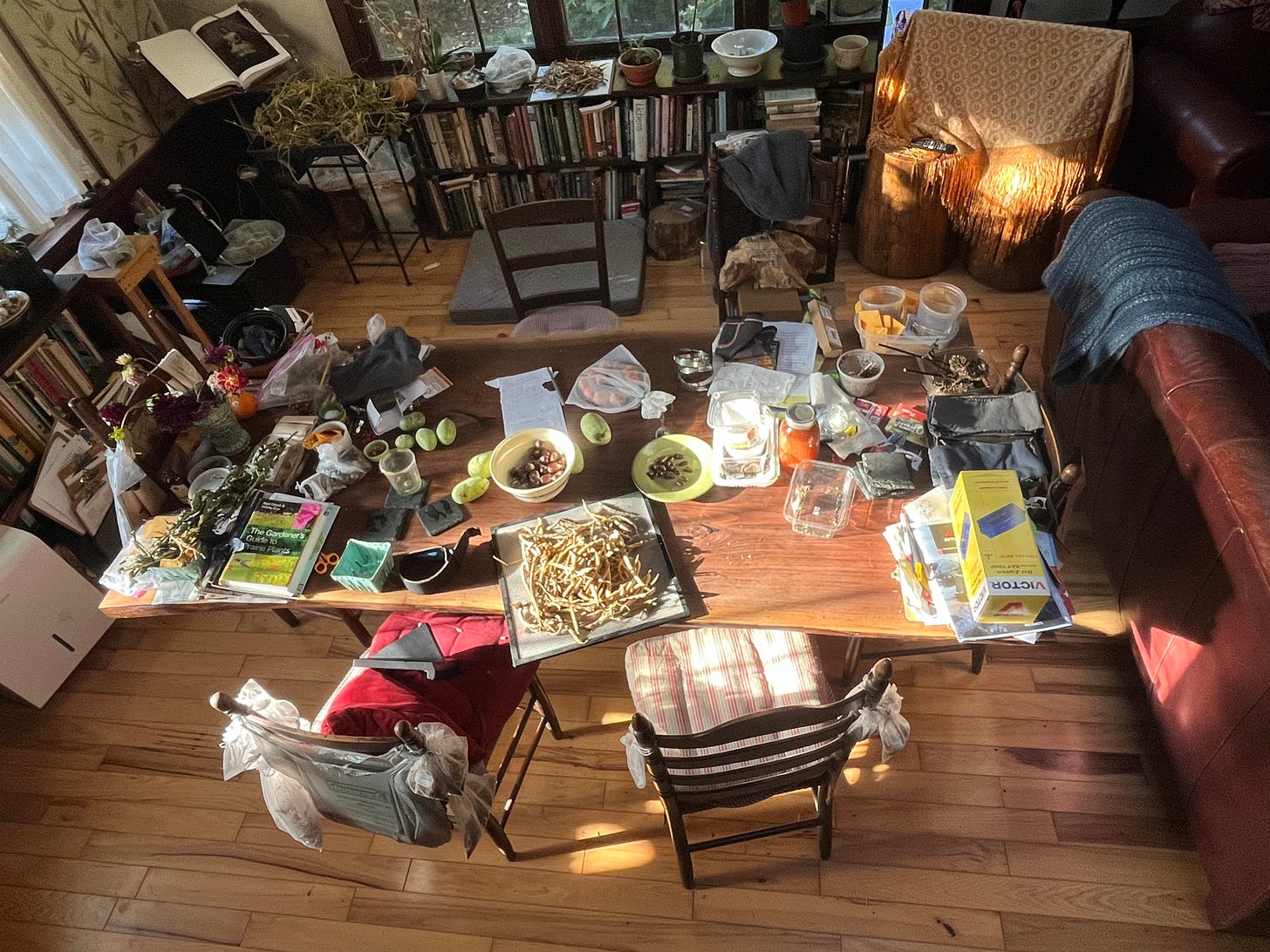
And with managing the end of the season duties at Hortus there’s still much to be done.
So, of course, leaving the leaves, not cutting back flowers, or gathering up all the seed heads for that matter has just saved me several days of work. So what exactly is there still to do?
Assessing successes as well as failures are important observations for growing and maintaining a garden. Sure, you’re noticing throughout the season how particular plants are doing…was your rose bush as floriferous as the previous year? Did your squash plants avoid the squash bug but not the beetle? Sometimes though, when the season is done, the pots put away, the tomato trellises stored for next year, really thinking back and taking the big picture of things is helpful too. I’m a big fan of documenting the garden throughout the season (because who can remember what March was like??) and it serves as my visual notebook for reviewing the seasons and taking stock for the following year.
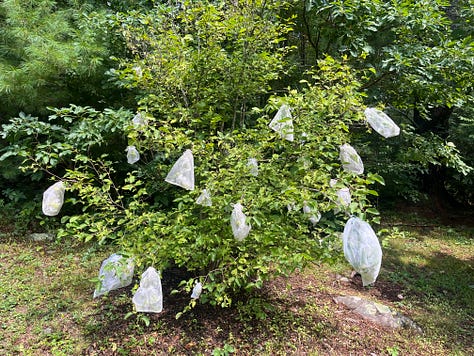

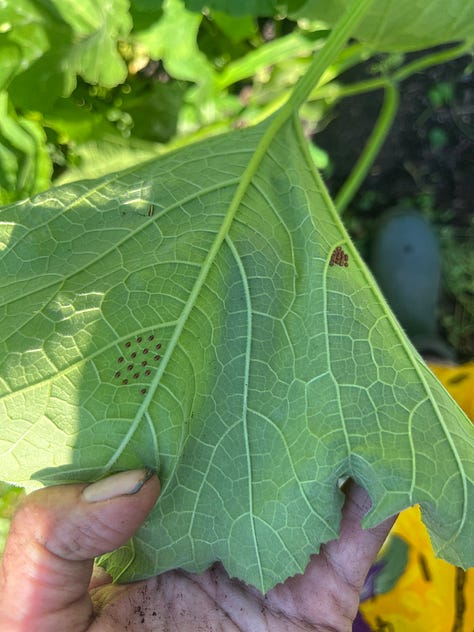
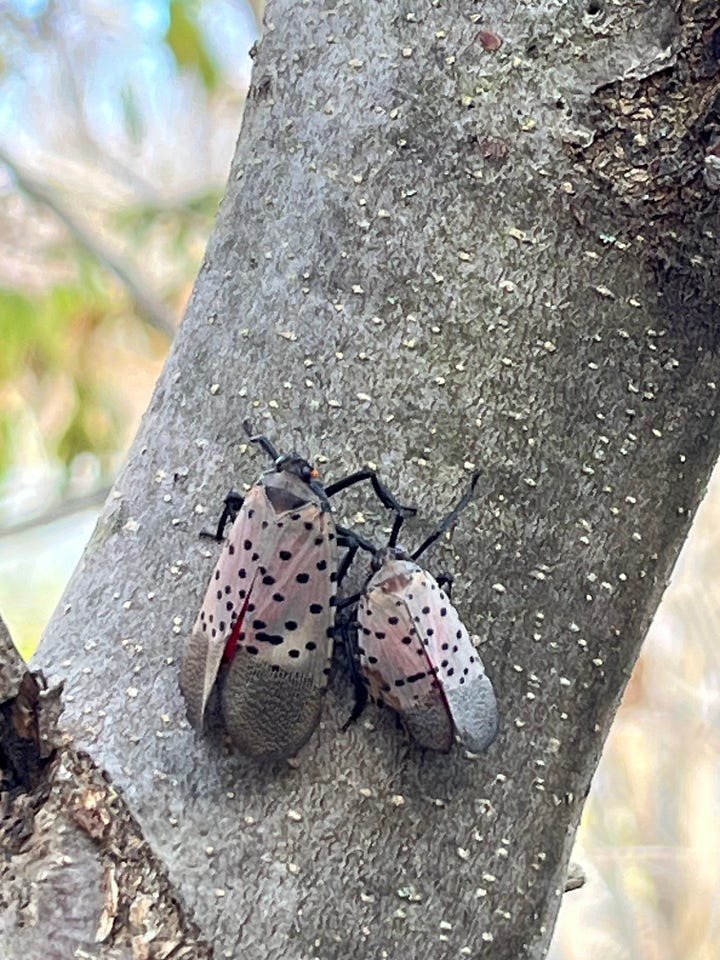

I bagged Hazelnuts this year and although I triple bagged them the chipmunks and squirrels ripped open every bag. And although I like to photograph things I did not have the heart to document the destruction!
Spongy moth caterpillars everywhere despite efforts to rid of the egg sacks the previous year which included spending money on an arborist to climb our black walnut (Juglans nigra) to destroy the eggs sacks, which were very badly infested.
Five different raccoons visited the garden this past season due to a large hole in the garden’s fencing that went undetected for a while. Heirloom Japanese Black Corn, and Goji decimating are just a few of the plants that was part of their trail of destruction. Shown here is a local cat who was found in the Have-a-Heart after eating the dog food.
{*Note we did contact our surrounding neighbors and put an add in the local NextDoor app and NOBODY claimed to be missing this beauty of a cat.*}
It was just a matter of time, but despite having proper pheromone bags from the DEC that we put up this summer, (which ended up not attracting the bugs), we ended up finding Spotted Lantern Flies early October on the Toona sinensis and the Tetradium daniellii.

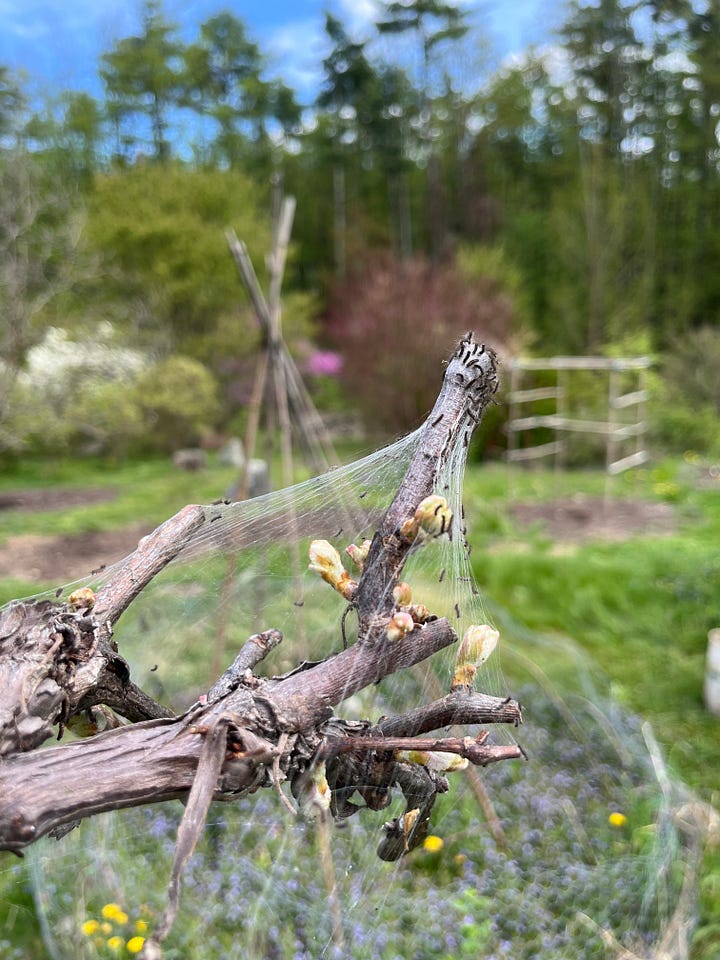


Some failures or garden pests
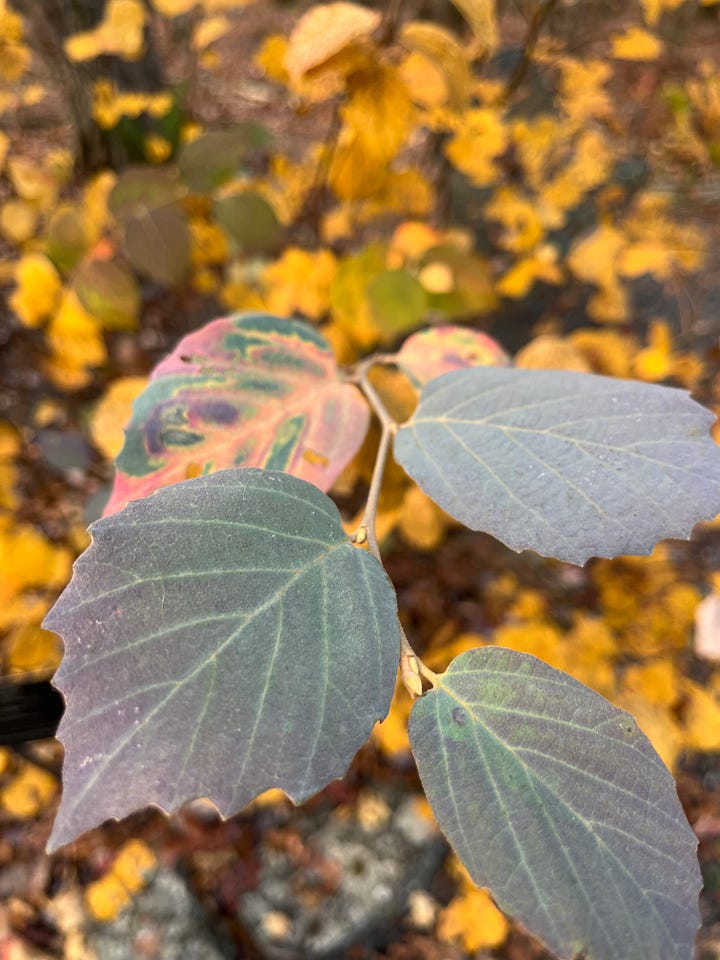
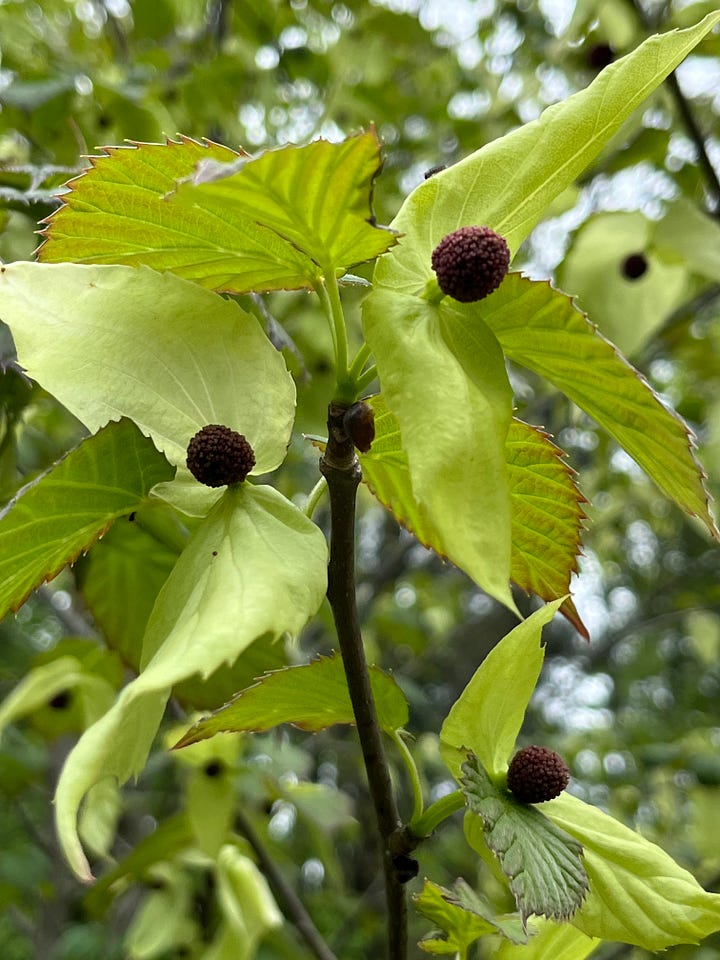
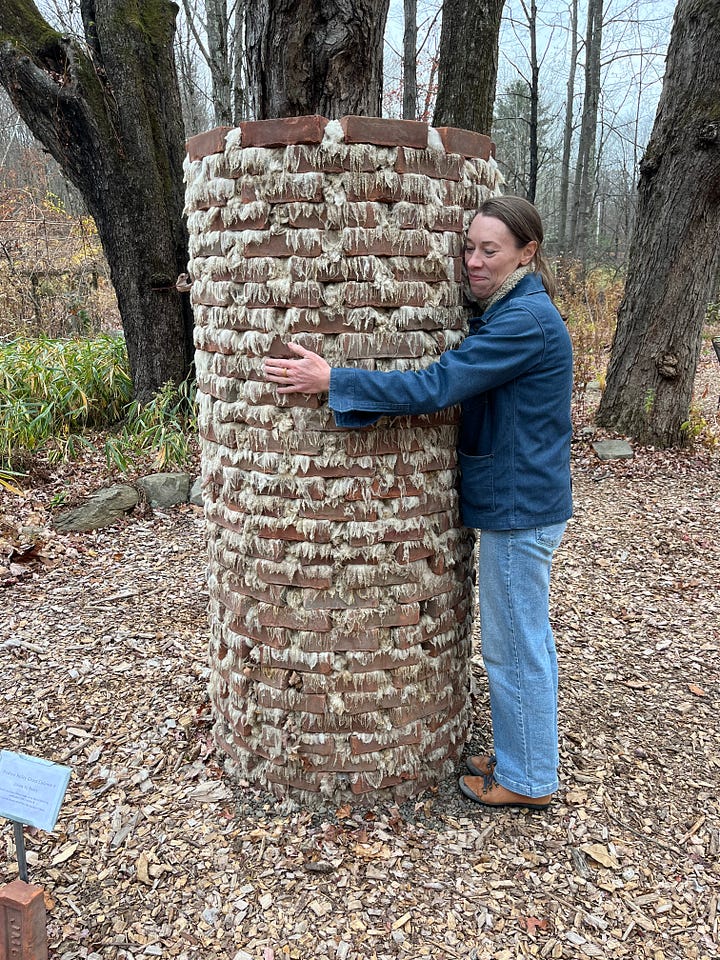

Fothergilla can be persnickety when offering up fall color, but it did not disappoint this year, especially the ‘Blue Shadow’ cultivar.
The Dove or Handkerchief tree (Davidia involucrata) flowered for the first time. All the literature says that the tree can take ten years to produce flowers and our specimen was right on time with offering up its gorgeous blossoms.
The featured “Art in the Garden” artist, Alison McNulty, came by on closing day to see how her sculpture fared, which we all agreed did exceedingly well considering the birds and squirrels left most of the wool intact.
My effort at hand-pollinating the Akebia vines finally paid off after not having fruit for many years. These weird-looking fruits actually have a tasty “tapioca-like” jelly inside them and are a fruit used often in Japanese cooking. Here is an interesting video posted from Instagram on using the fruit. Notice how the vine has crept over other plants..
Despite it being considered naturalized now in many Eastern states the vines at Hortus are in shade and can be managed by simply pulling the vines out where you don’t want them. I have a special place for this fruit since it essentially got us our book deal.
In our book Cold-Hardy Fruits and Nuts, we advise against planting akebia in full-sun sites. We also write about 49 other edible plants, most being very low-maintenance and very well-behaved, with more than half being hardy to zone 3. We hope that it will inspire you to put in plants you’ve had on your wish list or perhaps ones you’ve never even heard of..
If you have enjoyed reading this bloggy newsletter check out some blog posts that Fine Gardening Magazine has been publishing of mine…
There are many ways to support the arboretum;
You can donate
You can become a member
You can become a paying subscriber to this newsletter
Thank you for reading along and see you in the gardens in 2025
!

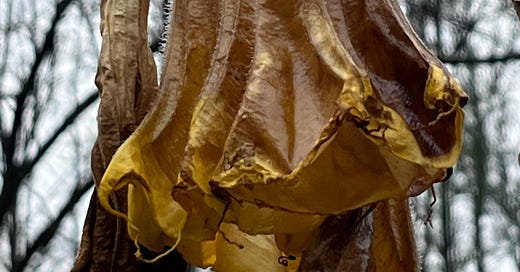



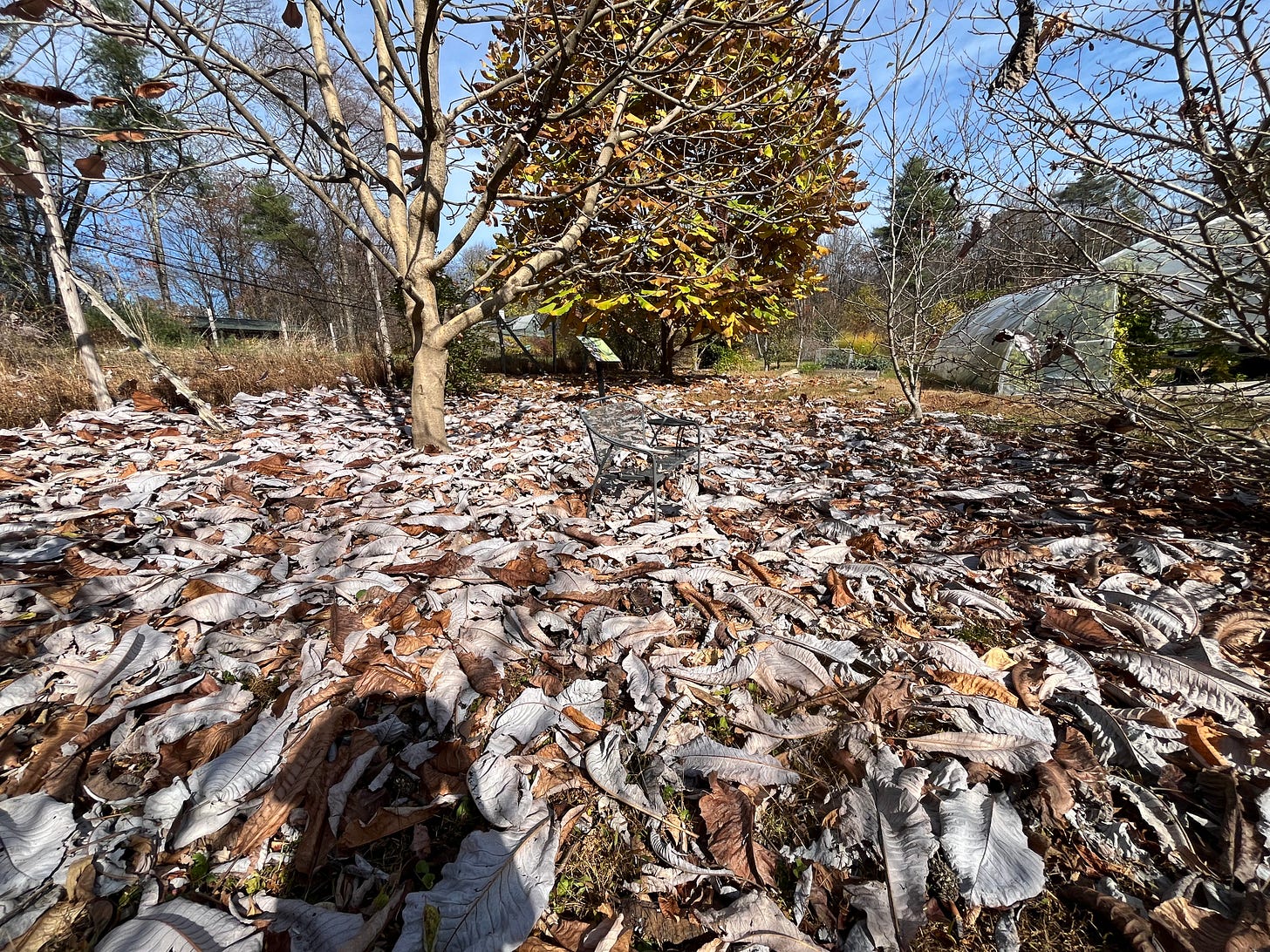
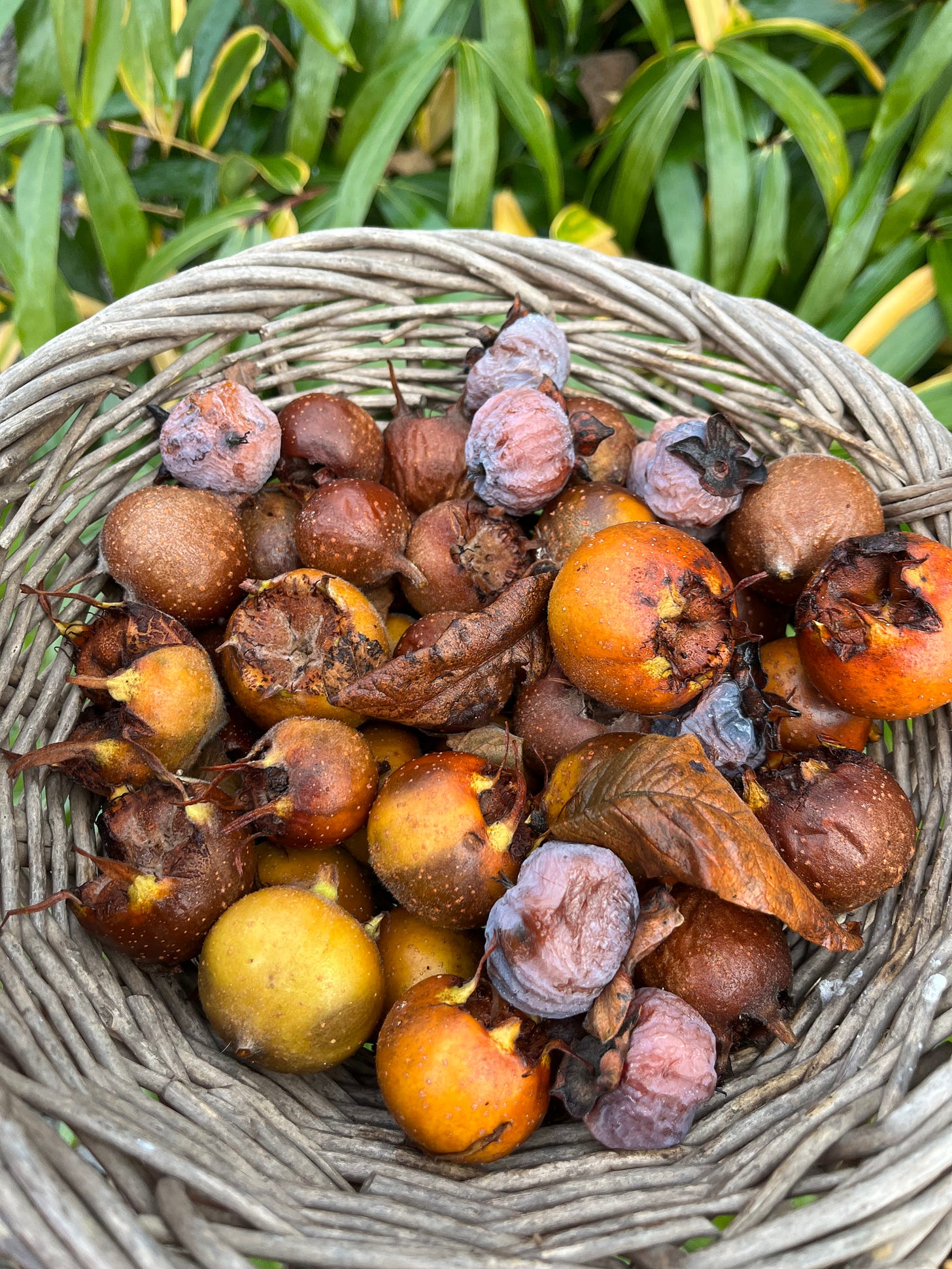
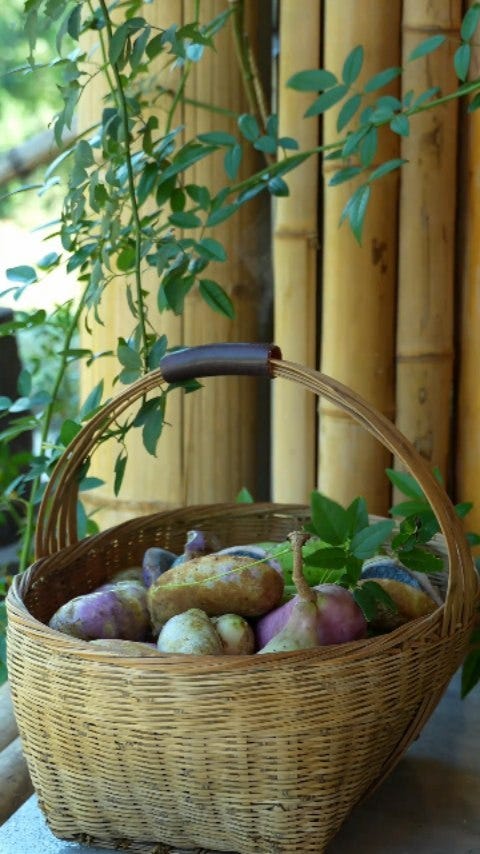

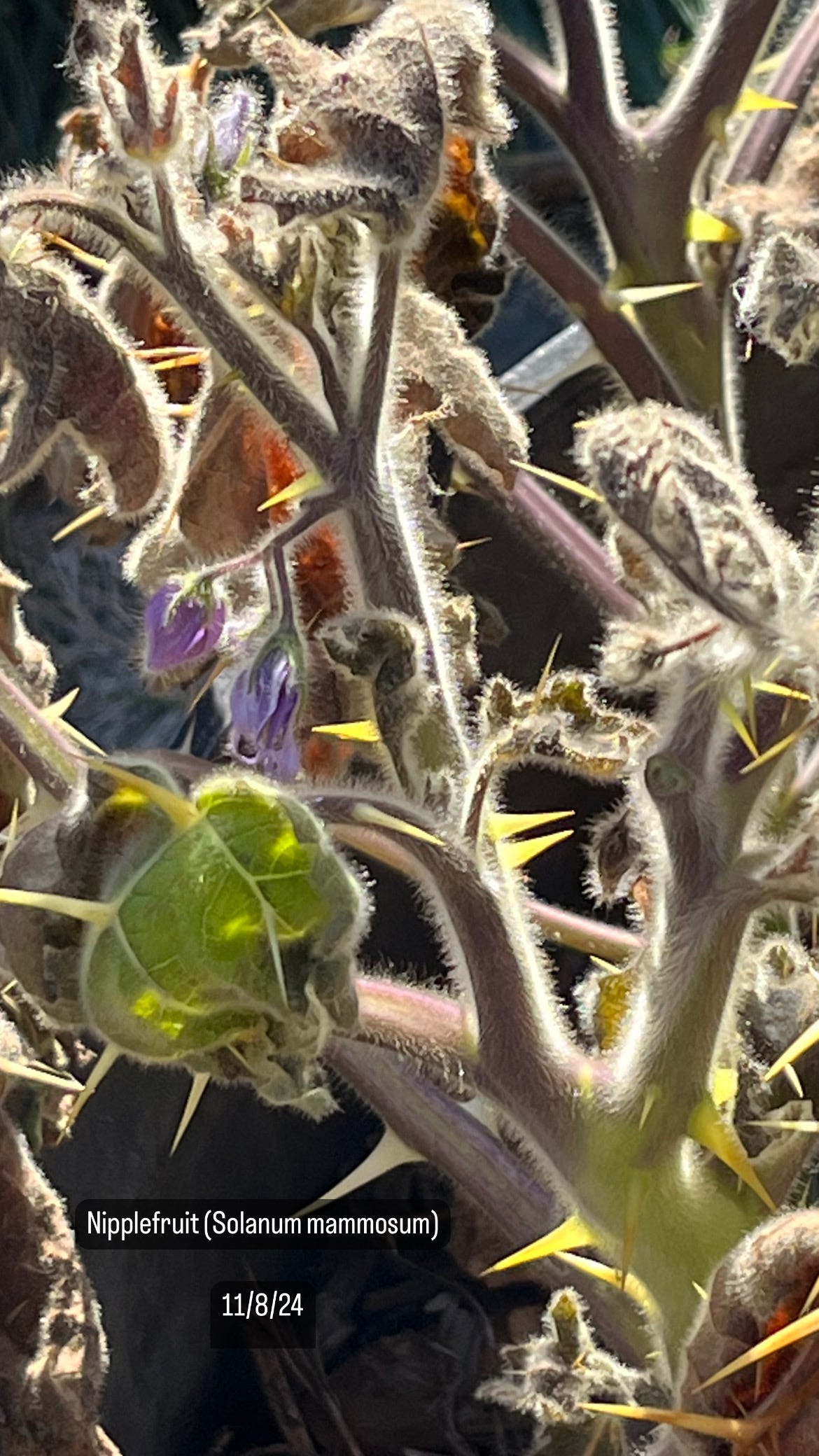

Have a wonderful holiday and much success in the new year!
Love these articles